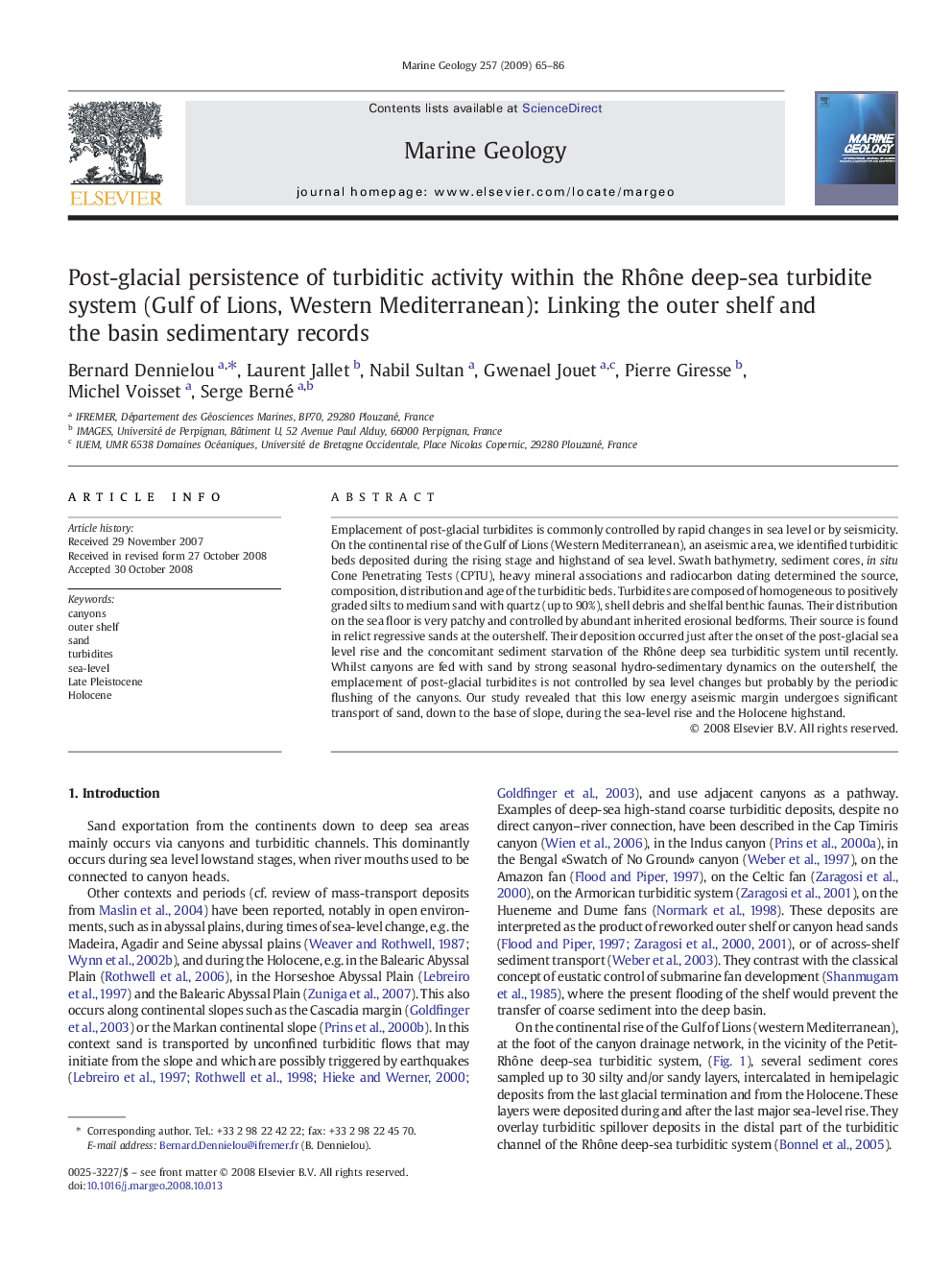| Article ID | Journal | Published Year | Pages | File Type |
|---|---|---|---|---|
| 4719150 | Marine Geology | 2009 | 22 Pages |
Abstract
Emplacement of post-glacial turbidites is commonly controlled by rapid changes in sea level or by seismicity. On the continental rise of the Gulf of Lions (Western Mediterranean), an aseismic area, we identified turbiditic beds deposited during the rising stage and highstand of sea level. Swath bathymetry, sediment cores, in situ Cone Penetrating Tests (CPTU), heavy mineral associations and radiocarbon dating determined the source, composition, distribution and age of the turbiditic beds. Turbidites are composed of homogeneous to positively graded silts to medium sand with quartz (up to 90%), shell debris and shelfal benthic faunas. Their distribution on the sea floor is very patchy and controlled by abundant inherited erosional bedforms. Their source is found in relict regressive sands at the outershelf. Their deposition occurred just after the onset of the post-glacial sea level rise and the concomitant sediment starvation of the Rhône deep sea turbiditic system until recently. Whilst canyons are fed with sand by strong seasonal hydro-sedimentary dynamics on the outershelf, the emplacement of post-glacial turbidites is not controlled by sea level changes but probably by the periodic flushing of the canyons. Our study revealed that this low energy aseismic margin undergoes significant transport of sand, down to the base of slope, during the sea-level rise and the Holocene highstand.
Related Topics
Physical Sciences and Engineering
Earth and Planetary Sciences
Geochemistry and Petrology
Authors
Bernard Dennielou, Laurent Jallet, Nabil Sultan, Gwenael Jouet, Pierre Giresse, Michel Voisset, Serge Berné,
